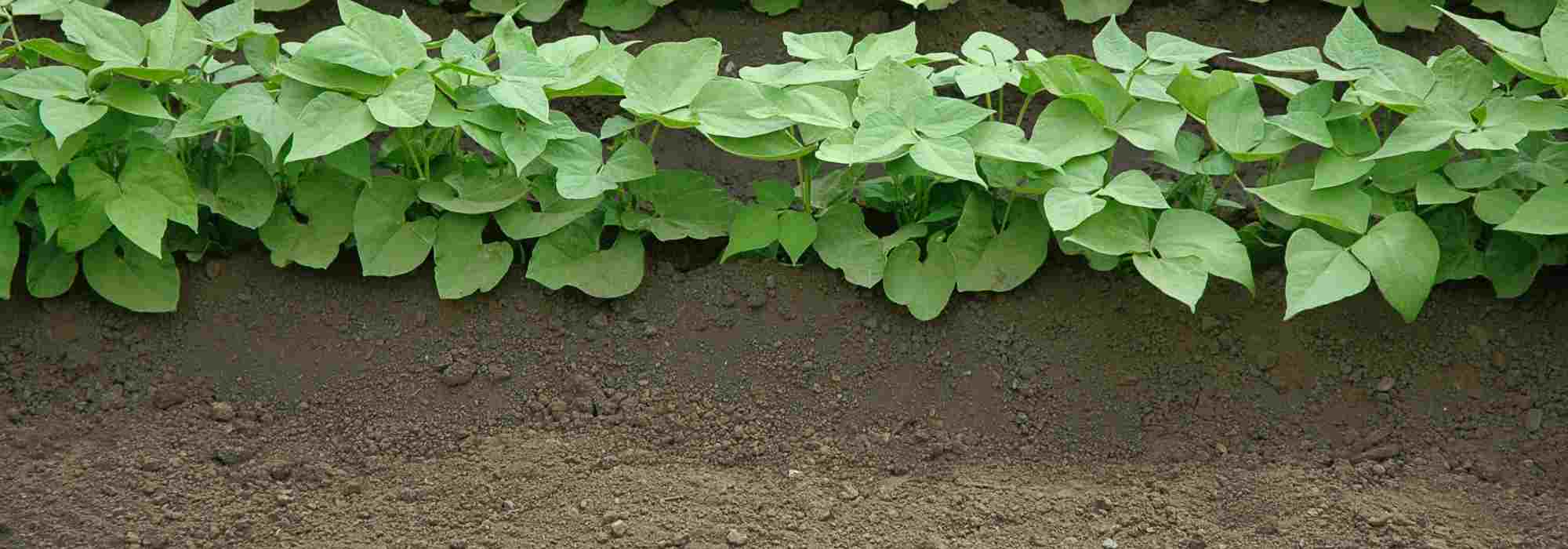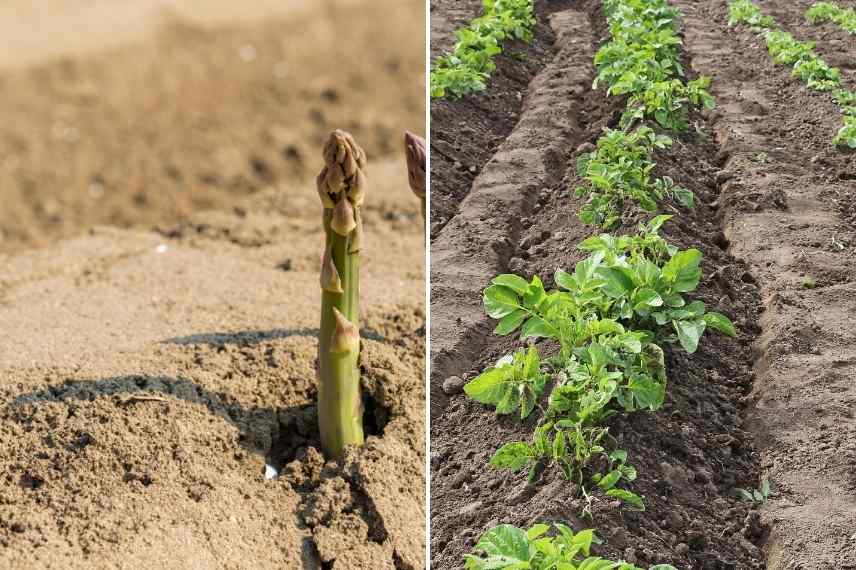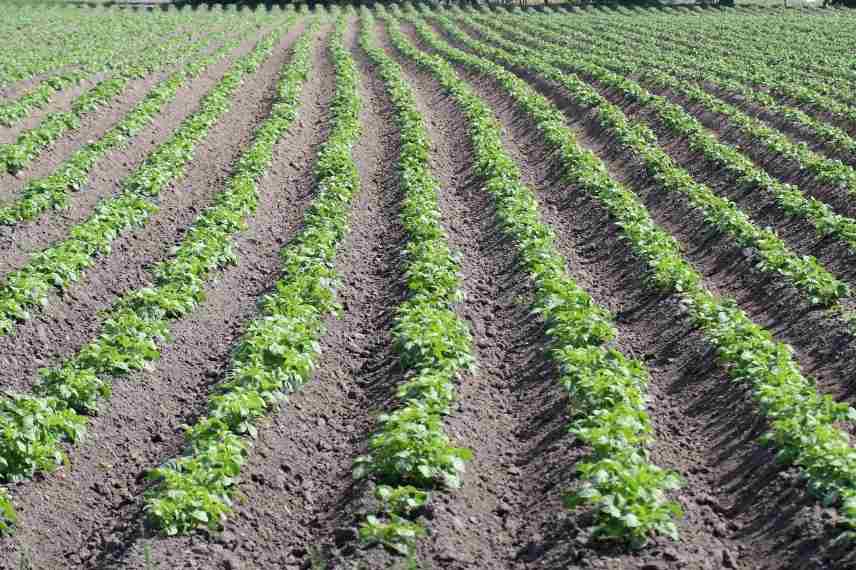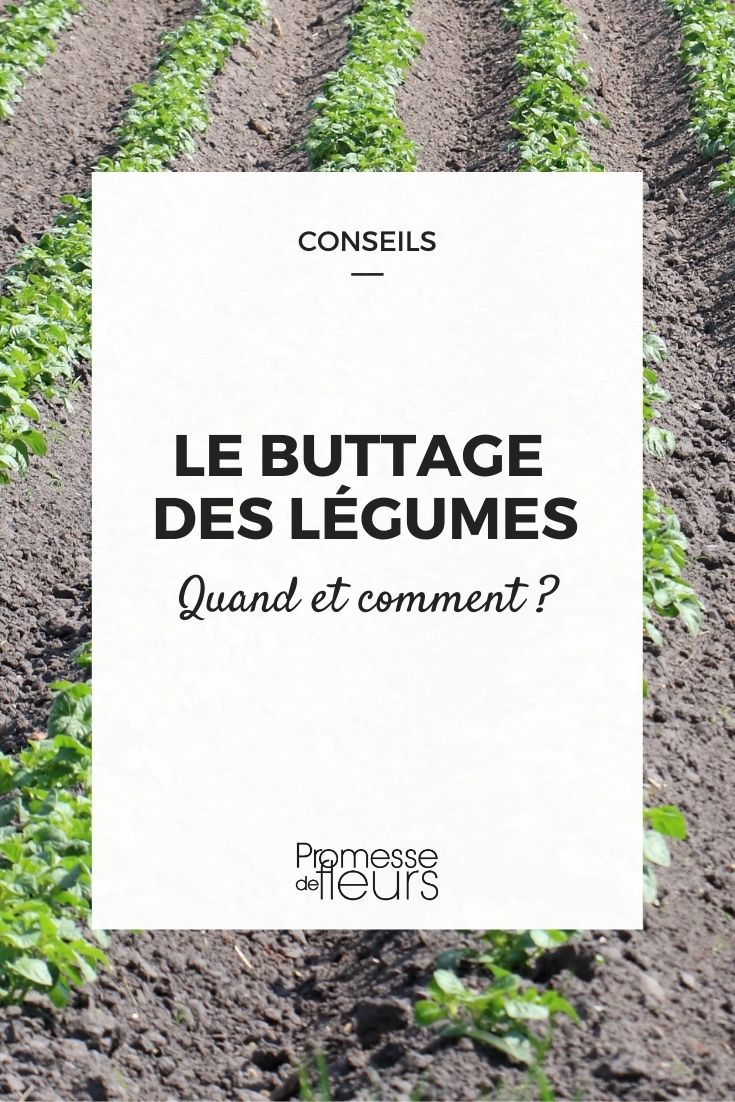
When and how to earth up vegetables in the vegetable patch?
Everything you need to know about the right techniques and tools
Contents
Technique widely practised in vegetable patches for centuries, hilling vegetables has many beneficial effects on production and protection of young plants. It is nowadays somewhat less practised in gardens (notably in permaculture) because it almost always involves leaving soil naked, which is no longer very fashionable.
Discover which vegetables are suitable, and when and how to hill them in the vegetable patch?
What is earthing up?
Earthing up involves bringing a certain quantity of soil to base of vegetables for various purposes :
- Increasing yield of a young plant. Most well-known example is potato ;
- Improving stability of certain wind-sensitive vegetables such as beans, broad beans, peas ;
- Blanching certain parts of plant to make them less bitter. Leek is most common example ;
- Frost protection. In that case, it is combined with a mulching for maximum protection. Artichoke is often protected this way in winter ;
- Keeping soil cooler at base of plant ;
- Avoid excess moisture : earth up certain vegetables in heavy soil when stagnant moisture threatens their growth ;
- Limit adventive weeds ;
- Loosen soil ;
- Increase root development.

Earthing up is suitable, among other things, for vegetables requiring blanching (left: asparagus), or to improve yield of a crop (right: potatoes)
When and how to earth up your vegetables?
Work in dry weather, when soil is not waterlogged.
Earth up around each young plant or along whole row of vegetables. To do this, simply draw soil with your tool towards base of each vegetable or either side of the row, forming a mound.
Here is a table summarising main vegetables concerned by this method :
| Vegetables | When to earth up | How high? | Tools to use | Purpose |
| Artichoke | From October to April | As high as possible. Combine with good mulch | Hoe, hand hoe, rake, hand fork, tying string | Winter protection from frost |
| Asparagus | From emergence of spears | As high as necessary. Stem must never appear; generally 30 to 35 cm in total | Hoe, hand fork, rake | Obtain a less bitter, paler vegetable |
| Cabbages | When young plants begin to lean over | Up to first pair of leaves | Hand hoe, rake, hoe | Stabilise plant against wind and encourage root development |
| Celery (stalk celery) | About three weeks before harvest | Mature plant | Ties for tying leaves, rake, hoe, hand fork… | Blanch stalks before harvest |
| Fennel | From formation of bulb (diameter of an egg) | Entire height of bulb | Hoe, rake, hand hoe and hand fork | Obtain a whiter bulb, ensure stability and possibly protect against cold late in season |
| Broad beans | When young plants reach 25 cm | At least 10 cm | Hoe, rake, hand hoe and hand fork | Improved anchorage against wind through root development |
| Beans | When young plants reach 15 cm | Up to first leaves | Hoe, rake, hand hoe and hand fork | Improved anchorage against wind through root development |
| Leeks | Earth up at least 3 times, about 10 cm each time | 2 to 3 weeks after transplanting | Hoe, rake, hand hoe and hand fork | Blanch the stem |
| Peas | As soon as seedlings reach 10 cm | At least 10 cm | Hoe, rake, hand hoe and hand fork | Reduce crop’s susceptibility to wind |
| Potatoes | When young plants are about 25 cm. Second earthing up one month later | First earthing up to about 10 cm then second as high as possible | Potato hiller, rototiller with blade (for large areas), hoe | Better production of tubercle, weeding, water drainage, prevent tubercle greening (unfit for consumption) |

Hilling potatoes
Which tools should be used for earthing up?
Choice of tool for bringing soil up against your vegetables depends on spacing between your plants, your physical strength and length of vegetable row to earth up.
Apart from potatoes, which require a specific hilling tool, there are 4 main tools for earthing up the vegetables in your vegetable patch:
-
Serfouette
This tool consists of two distinct parts: the panne and the langue.
The panne (blade-shaped) is used for hoeing (weeding), cultivating (breaking the soil’s surface crust) and earthing up the soil. The langue, meanwhile, is used to trace furrows, aerate the soil and even dig in certain situations.
C’est un outil polyvalent qui est très pratique et maniable dans de nombreuses situations au potager.
⇒ What is a serfouette?
-
Hoe
Tool often a little heavier and requiring more physical effort than the serfouette or hand hoe. This is due to the significant width of the single blade forming the tool. It is mainly used for hoeing (scraping soil to cut unwanted herbs), cultivating, crumbling, digging and earthing up the soil.
The hoe is pulled towards you in order to bring soil up to earth up towards the vegetable.
⇒ What is a hoe?
-
Rake
This tool, normally used to level the soil, can also be used for earthing up by simply using it upside down.
-
Hand hoe
Easy to use and fairly light, the hand hoe is classically used to remove the soil crust and scalp invasive herbs from your vegetable ranks. It allows better penetration of water into the soil thanks to these two actions (“one hoeing is worth two waterings”). The hand hoe can earth up plants in the same way as the hoe. It differs from the latter by the acute angle formed by its blade in relation to the handle and by its narrower cutting edge.
⇒ What is a hand hoe?
François’s tips: Of course take care not to damage roots during the operation or to scrape plants with the blade of your tool. Also remember to keep your back straight during this operation, which can prove labour-intensive if your vegetable patch is large. Choosing a tool with a sufficiently long handle will also spare your back.
- Subscribe!
- Contents
































Comments